Joy Marie Clarkson's Blog, page 7
November 1, 2019
All Saints' Day
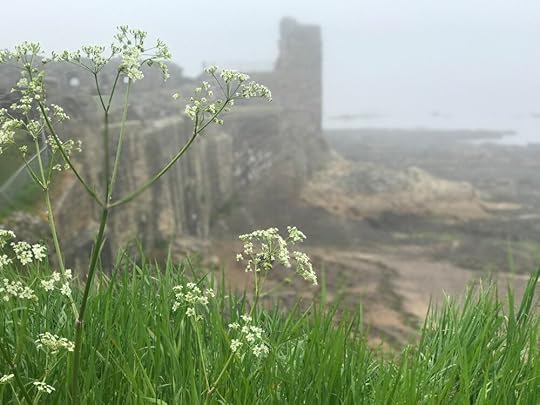
It was All Saints’ day, and not at all the time for new seeds to grow in the garden.
The rain dropped gently on the ruins, streaming down the old cathedral wall, soaking the many coloured branches, aiding them on their journey from crisp, crackly autumn leaves to soggy brown mulch that will help the grass spring green again next year. This is how it is in the world: things grow, they bloom, and they die, and in their dying, they help a new thing grow. It is a beautiful thing, the growing and blooming, the life-giving death. But death is woven into the whole thing, inextricable, a permanent and unwelcome guest.
Trees were not the only thing planted there. People were planted there too.Once upon a time, this was one of the greatest cathedrals in Europe. But bickering bishops and impatient reformers conspired to smashed its windows, and then, undecided in their fervour, left it to decay. Eventually, the town started to use the cathedral stones to build cottages in town. Just like the trees shed their leaves and fertilise the ground where new life will grow up, the cathedral shed its stones so that fishermen and bakers and scholars could be warm in the winter. And then, when the cathedral had shed nearly all its stones, they began to use it as a graveyard. Where the sanctuary used to be, where worshippers used to kneel and make their supplications, they were now buried.
I have often thought the gravestones look like the little tabs in a spring garden that say “carrots” or “lettuce,” proclaiming, rather remarkably, that from the ash black soil, tender life will soon shoot up. Every year it is remarkable. Seeds are locked in their little death chambers, deep in the cold ground, but come Eastertide, they peek out of the earth, tender and small, and very, very alive.
But these markers are not for carrots, they are for people.
Hamish. Elspeth. Alasdair. And a thousand other Scottish names, a garden variety! Some of the names have begun to fade, washed away by a thousand autumn rains. It’s odd, really. Usually, when things in nature die, they feed the earth and new life springs up in its stead. This is the way with the autumn leaves, the spring seeds, even the great stone cathedral; each gives new life with its dying. But humans keep dying, being planted in the earth, and staying there. The world is full of graveyards full of people! Every year, I watch the rector plant new people in the cathedral, and mark their graves, like carrots, in hopes that next year they might emerge. But each year, they stayed stubbornly planted. Stubbornly dead. Unwilling to yield new life from their own death.
And so, it seemed, it would be for ten thousand more.
But that is why I’m writing to you. In the blink of an eye, it all changed.
It was All Saints Day. I walked into the side gate at the ruins, in the back. A dense fog hung over the town that morning, but all at once, burst of warm, fragrant air spread over cathedral grounds. The grass quivered under its touch, and as it quivered, the whole earth seemed to rattle. The grass was green, but from some unknown centre, a greater vividness began to spread over the earth, the took on a deeper more verdent green, as though it had actually been grey all along.
For a moment, I had forgotten to breathe, but as the rattling earth began to shake more violently, I couldn’t help but shout in fear. Golden light streamed from the cracks in the cathedral wall. The unsettled earth had torn the green grass, and the rich brown earth lay in clumps around the graves. Then, the most frightening thing of all began to happen.
From the unsettled earth, bright white bones began to emerge. Hands, heads, legs, spines, willy nilly at first, in disparate clumps, and then they began to assemble themselves and to stand, clumps of earth falling through the empty frames of the skeletons as they began to stand at full height. There were tall skeletons, short skeletons, sturdy ones and frail, adults and children. I stood, terrified. Could they see me?
Again, a warm breath, cast itself over the ruins, tossing my hair into my eyes. When I cleared it away, what I saw caught the scream in my throat, paralysed with terror and wonder.
Where skeletons once stood, I began to see human, fleshly bodies. Out of the corner of my eye, I saw a terrible light. There, a skeleton stood, almost patiently, as ribbons of light twirled around it, carefully spinning layers of flesh and skin back onto its body. In the course of a few moments, the skeleton was a discernible human figure, a stout young man with dark curly hair, and a long, noble nose. Was he naked or clothed? I could not tell, and it did not matter. He gazed down at his hands, turning them back and forth from their palms. As he did so, a great delight spread across his face. He began to run, to shout with joy.
I looked around me. Nearly all the skeletons had been reclothed in skin, and waves of pleasure seemed to sweep over the graveyard, as the skeletons realised they were no longer skeletons. They greeted each other with laughter and embraces. Amongst all this hilarity, I saw a tall, lean woman with cascades of curly red hair, awaken and look calmly about her, a furrow on her brow. She looked down and her eyes widened. Beside her a small skeleton was being wrapped about with the golden light. Out of the blinding glow, a child, with wild red hair like her own emerged. He looked at her and laughed, reaching out his arms to her. Relief from a long spent grief spread across her face as she scooped him into her arms and held him tightly. In their embrace, they seemed to both grow grow and shrink. When they finished embracing, they were the same size. She had grown somewhat younger, and he somewhat older. They looked to one another, joined hands and set out, it seemed, to find someone else.
All around me I witnessed scenes of reunion and transformation. Sisters and brothers, husbands and wives, a whole family with the same chestnut wavy hair. They all came to life, embraced, and laughed. They all seemed to be the same age. They were neither young nor old, but they were certainly not middle aged. They seemed to be the age toward which youth strives, and which old age remembers as if it was a dream. And when they greeted each other, they began to sing as if it was the most natural thing to do. A cacophony of melodies echoed through the graveyard, but somehow they were all in tune. They bounced off the walls of the cathedral, and as my eyes followed the sound, I realised that I had nearly missed another miracle: the resurrection of the cathedral.
In their midst, and yet towering over them, there was a woman made of the stones of the cathedral. She was sleepy, and the strands of her hair, made of moss and grass and tree branches hung down past her waist. As she lifted her hands to rub her sleepy eyes, seagulls flew in every direction, off to tell the good news: the Cathedral is finally awake!
And she was! Her eyes glistened a transparent blue, and as she surveyed the merry surroundings, she began to laugh. Her whole stoney body shook with delight, pebbles and stones came tumbling off her walled body, but posed no danger to anyone. Her throaty joy echoed through the town, a glorious crescendo to the already magnificent chorus of voices. She laughed until she cried, and her tears, turning to diamonds and sapphires and rubies as they streamed down her face, fell unceremoniously on the ground around her. She shook her mighty head. Strand by strand, the grass fell from her hair, revealing streams of radiant light that floated in the air as though she were suspended in water. The Cathedral spoke:
“All my friends are awake! You known, you unknown saints!”
Her voice washed over the cathedral grounds like a power wave. All the souls turned toward her and cheered.
“Let us go to see the King! For it is my wedding day.”
She turned away from them, toward the sea and the east. As she did, her gown of light, laced with beams of radiant colours spread over the graveyard. Without instruction, the spirits climbed upon her train, helping each other up and singing as they did. The Cathedral raised her arms to greet the morning, as the sun crested the sea’s horizon. Had it been night all along? How had I not noticed?
With all the spirits aboard, the cathedral began to walk. Over the cliff, onto the beach, and finally onto the waves of the North Sea. She glided on the waves toward the sun, walking on the water as lightly as a feather. The saints, still riding on her train, were bent on their knees staring into the waves with amazement and delight. They began to reach their arms into the lapping water, wet up to their shoulders. All at once, men emerged from the waves, and some women too. Sailors and seafarers who had drowned. The were pulled up on the cathedral’s trail, embraced, and met with laughter and song. Some ran to find their loved ones, some simply took in the glory of all the saints and the cathedral, and knelt to pray with thanksgiving.
They began to pass out of my sight, and into the sun.
Suddenly, I was taken with a desperate sadness. I longed to be with them! Had they gone where I could not go? I fell to my knees, my face to the ground, and prayed:
“Oh, Lord! I want to join their company! To worship you forever!”
When I raised my eyes, all was as it had been.
The Cathedral was still there, it’s stones grey and wet with rain. The sun was setting. The graves untouched, patient, un-sprouted. But, it had all happened, I knew it to be true. Was I left behind? Was it still to come? Did I, too, need to be planted before I could rise?
I heard the bells of All Saints on North Castle Street. I took myself to church, to pray that I might be ready when that Holy Day came, that with the Saints and with the Church, I might rise and run and worship forever in God’s glory.
O ALMIGHTY God, who hast knit together thine elect in one communion and fellowship, in the mystical body of thy Son Christ our Lord: Grant us grace so to follow thy blessed Saints in all virtuous and godly living, that we may come to those unspeakable joys, which thou hast prepared for them that unfeignedly love thee; through Jesus Christ our Lord. Amen

the cathedral herself.
October 29, 2019
Memory

Life can only be understood backwards; but it must be lived forwards.
— Soren Kierkegaard
I recently misplaced one of my journals.
This precipitated a bit of a personal crisis; it is an important journal, you see.. I’ve kept a fairly consistent journal since my teens, and this particular volume held the elations, anxieties, and regrets of nine of the most transformative months of my life. I discovered it was missing while in the process of finishing a writing poem I began composing in the other journal. As I searched, a rising panic flooded my chest. To lose my journal is to lose a way of remembering, a way of marking who I am have been, and who I am becoming. How could I close this chapter of life without remembering how it began?
Memory profoundly shapes our sense of identity; who we are, where we come from, where we are going. It is fundamental, and it is flawed, inherently incomplete. How, then, can we truly know who we are?
To explore the power and weakness of memory, listen in to this week's podcast at the widget above, and follow along in the notes below.
Visual — Memento, by Christopher Nolanthe story of a man who cannot remember
Memory is not merely the recollection of individual facts, but the process of sense making through story telling.
Guy Pearce stars as a man who, a man who, as a result of a past trauma, has anterograde amnesia (the inability to form new memories) and has short-term memory loss approximately every five minutes. He is searching for the persons who attacked him and killed his wife, using an intricate system of Polaroid photographs and tattoos to track information he cannot remember.
Memento is presented as two different sequences of scenes interspersed during the film: a series in black-and-white that is shown chronologically, and a series of color sequences shown in reverse order (simulating for the audience the mental state of the protagonist). The two sequences meet at the end of the film, producing one complete and cohesive narrative.
Wikipedia (I know, I know. But it’s a solid summary)
WARNING: this film has mature content, violence, and is disturbing. While it makes an excellent point, I wouldn’t necessarily recommend watching it unless you feel ready to reckon with some heavy subject matter.Memento shows the deceptiveness of a conception of memory as collections of facts.In the movie, Lenny keeps meticulous records, tattooing “facts” on his body, using tricks and sticky notes to keep the facts about his wife’s murder straight. But without the ability to create new memories, stringing them together in a narrative, those collected “facts” are abused, manipulated, and rearranged, so that he becomes a murderer himself.
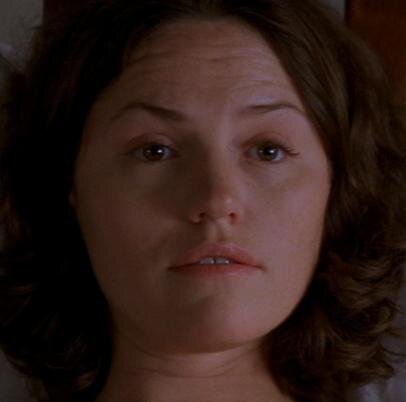
Lenny’s memory of his wife is his anchor to reality. His love, grief, and rage over her death reminds him that there is a reality outside of his ability to remember.
Love draws us completely out of our own heads, our own accounts of what is true, baptised in the overwhelming reality of the beloved. Love is the reality which exists outside of our ability to narrate our own identities and histories. This is reflected in Lenny’s final monologue.
I have to believe in a world outside my own mind.
I have to believe that my actions still have meaning.
Even if I can’t remember them.
I have to believe that when my eyes are closed, the world’s still here.
Do I believe the world’s still here?
Is it still out there?
Yeah.
We all need memories to remind ourselves who we are.
I’m no different.
Now, where was I?
— Memento
Memento Screenplay — Christopher Nolan
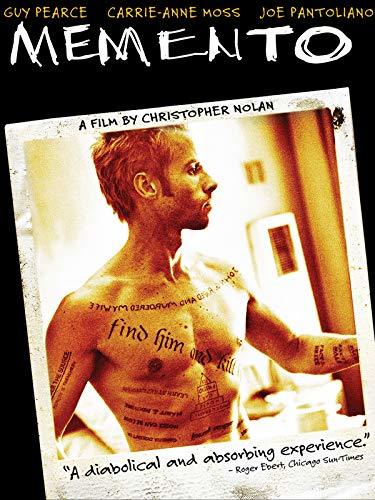
Memento
Starring Guy Pearce, Carrie-Anne Moss, Joe Pantoliano, Mark Boone Junior
What do we do when memory fails us? What if memory always fails us?
But of course, Lenny’s problem is that the subject of his love is dead. Without his memory, and without his wife, there is nothing which anchors him in the present. He is lost to himself and others. Self-knowledge is lost to Lenny. He is lost in a sea of facts which may not be facts that tell him nothing about himself.
The problem of memory and self knowledge (or identity) is one which a very different thinker wrestled with his whole life: Saint Augustine.
Conversion de Augustin, Fra Angelico
What is slipping through the present moment is my continuing performance of a song I have once learned
— Rowan Williams, On Augustine
God’s knowledge of me is available not as a picture I can grasp or as a piece of information, but in the form of trust in God’s love— faith, in other words. Such trust is grounded in and enabled by the history of Christ. And that history reveals a divine life of love which secures an eternal place for me within its pattern”
— Rowan Williams, On Augustine
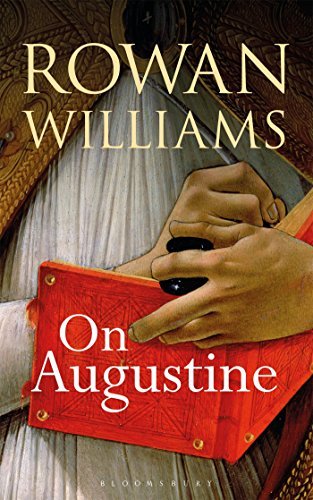
On Augustine
By Rowan Williams
2. Musical — West Side Story ScoreThe story of a city that cannot forget
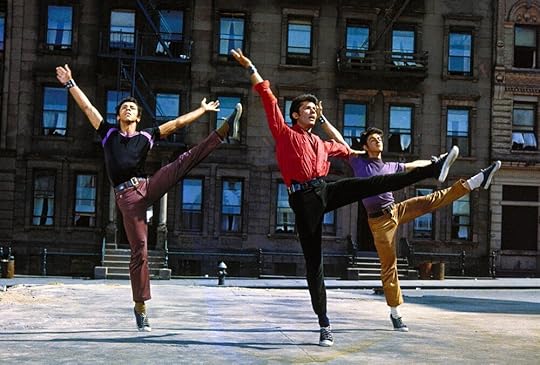
West Side Story (1961) retells the classic Shakespeare tragedy of Romeo and Juliet., exploring themes of love, violence, and (un)forgiveness.
Instead of the Montagues and Capulets, this classic musical follows the conflicts of two New York City gangs in the sixties: the Jets and the Sharks. The story follows the romance of two members of the rival immigrant gangs (one Polish, the other Puerto Rican). Between these two gangs exist grudges so deep they can hardly remember how they began, but so certain they refuse to forget. In the midst of these growing tensions, Tony and Maria begin to love each other. But can love grow if the violence of the past is not put to sleep?
To represent the tension of unresolved conflict, Berstein weaves the ominous tritone all throughout the score.
The Tritone: the Devil’s IntervalThe entire score of Leonard Bernstein’s famous score is based on the tritone, an interval so unsettling it has been called the “Devil’s Interval.” This tone begs to be resolved, and we as listeners feel uneasy until it is. In the story, this becomes an embodiment of the inability to resolve the love, violence, and hard feelings between the rival gangs the Jets and the Sharks.
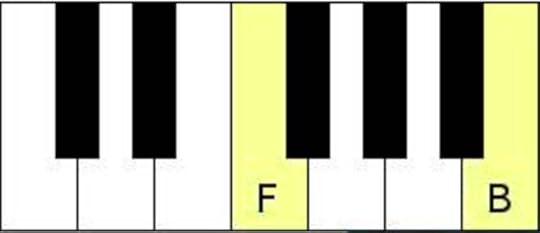
The most famous (and overt) use of the tritone in West Side Story can be found in the love song “Maria” whose unresolved hope foreshadows the tragic ending of the tale.For a fuller description of the score, check out this excellent video from the Carnegie Institute. The irresolution of the tritone becomes a living metaphor of what happens when trauma and anger lives on in the present instead of being put to rest in memory.
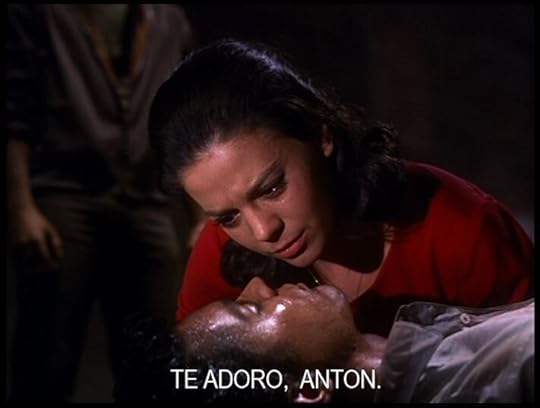
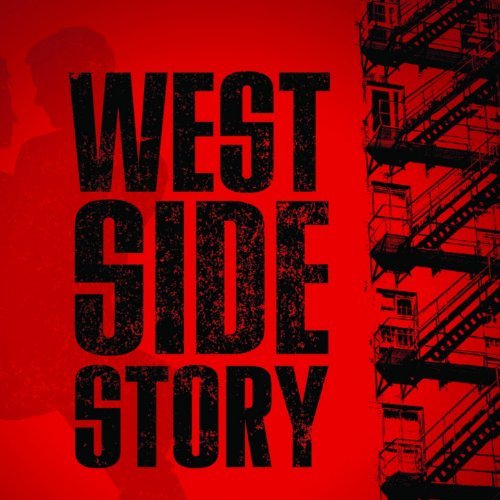
West Side Story (The Original Soundtrack Recording)
Original Master Tape
what happens when we cannot forget? when memory enslaves us?
Research on generational violence show that cycles of violence tend to continue generation after generation until the underlying trauma is addressed. Trauma is an inability to integrate an experience into memory. In his book The Body Keeps the Score Bessel Ven Der Kolk shows that the bodies of traumatized people react to the memory of trauma as though it were something happening in the present, manifesting all the physical responses of flight or fight as thought the trauma were present. As a trauma lives on with us in the present, we can never be free of the past. This explains why people and, indeed, communities can continue in cycles of trauma, unable to escape the grip of trauma which insists on repeating itself again and again. Memory becomes a trap, a prison. Healing comes when individuals are able to remember a traumatic experience as a bad thing that happened in the past.
One thing I do: forgetting what is behind and straining toward what is ahead, I press on toward the goal to win the prize for which God has called me heavenward in Christ Jesus.
— Philippians 3:14
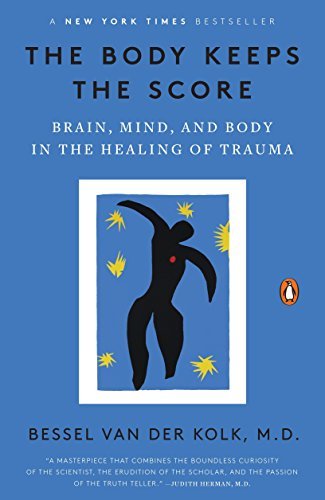
The Body Keeps the Score: Brain, Mind, and Body in the Healing of Trauma
By Bessel van der Kolk M.D.
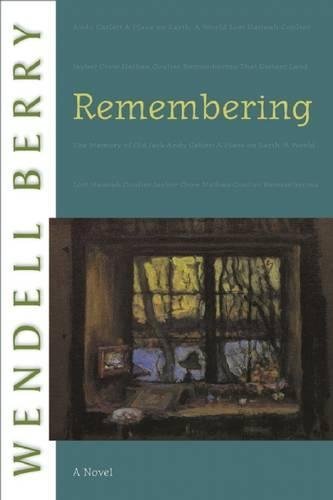
Remembering: A Novel (Port William)
By Wendell Berry
Andy Catlett has lost sight of who he is.
After a tragic farming accident resulting in the loss of his hand, he feels useless to his family and community. He leaves his wife and children to go to a farming conference, and possibly never to come back.
“He is held, though he does not hold. He is caught up again in the old pattern of entrances: of minds into minds, minds into place, places into minds. The pattern limits and complicates him, singling him out in his own flesh. Out of the multitude of possible lives that have surrounded and beckoned to him like a crowd around a star, he returns now to himself… He has met again his one life and one death, and he takes them back. It is as though, leaving, he has met himself already returning…meeting…a few dead and living whose love has claimed him forever. He will be partial and he will die; he will live out the truth of that. Though he does not hold, he is held. He is grieving, and he is full of joy.”
Wendell Berry, Remembering
Andy is drawn back from the brink of despair not by his own memory, but because he is remembered by others, held in the palm of someone else’s love. This ties back into Augustine’s understaniding of memory. As central as memory is, we cannot trust it. It is never final, whole. And so when it fails us, or fails to complete us, as it always will, the only comfort is to know that we are fundamentally held, remembered, in the mind of God. Andy is the opposite of Lenny— Lenny grasps desperately, but has nothing to hold onto. Andy lets go, turns away, and yet is held.
“If my identity is determined by the inaccessible but unfailing attention of God's love, the incarnation of the divine Word in Jesus is a declaration that this divine attention is in touch with us and transforming us through a particular worldly series of events transmitted by human telling, active in the present through the historical body of the Church.”
Rowan Williams, On Augustine
Our memories may be imperfect, our journals lost, but we can rest knowing that we are held in the mind of God.
Tune in next week for another episode!do you enjoy speaking with joy? consider supporting me on patreon!
October 14, 2019
Modern Day Monasticism

How can we incorporate rhythms of prayer into our every day lives, dedicating our work, play, and rest to God?
Almost a decade ago, I began using the Celtic Daily Prayer. in my morning devotions. It has a daily morning prayer, along with a series of biblical readings for every day of the year. It was a simple rhythm, but it met a deep need in my heart. I longed for ways to meaningfully mark my time with prayer, but didn’t feel capable of engendering such a discipline all on my own. There was such a comfort in knowing that the prayers that were growing familiar to my heart and mind were the same prayers being murmured in living rooms and on front porches and in bedrooms all over the world. It carried me in a way I didn’t know I needed to be carried.
More recently, a monastic writing group utterly transformed my research habits. In my time as a Phd candidate at St Andrews, I have often heard fellow postgraduates complain of two things: a lack of structure in their study habits, and a lack of meaningful community with fellow scholars of like minds and hearts. In my time at Oxford, I started attending a group that sought to meet these needs by calling students together to pray, work, and eat together, around the rhythms of morning and evening prayer, in the spirit of medieval monastic scriptoriums.
Both of these experiences touched on a deep need integrate my life of work and play with a life of prayer, ordering my days around offering them to God as a gift of praise. The Scriptorium and the Celtic Daily Prayer met these needs because they gave my days rhythms of prayer, making my days feel meaningful and connected to the church. They were examples of what I will call “modern day monasticism” drawing on the ancient habits of the church, which have been neglected in our world, much to our detriment. Our world operates by “secular” time, in which the only rhythms that mark our days are those of work, school, and market.
What would it look like to order our lives around rhythms of prayer instead?Today I explore this question with my dear brother Joel Clarkson, who is studying the historic development of morning and evening prayer in the church.p.s. we have Joel to thank for saving the day and the audio file for this episode which uploaded with no sound (!!!). some of you may have downloaded a blank file, but I’ve fixed the file and updated the link above.

If you want to learn more about Joel’s project and support him in his journey as a Phd student, check out his Patreon.
He posts theological essays, photo journals of our beautiful Saint Andrews, and monthly orchestral compositions. You won’t regret supporting his artistry and ministry to the church.
Joel's Patreon
Further Reading…
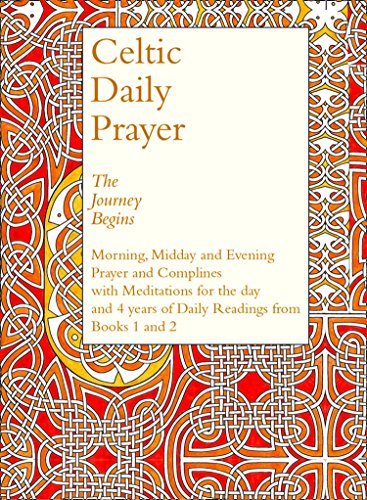
Celtic Daily Prayer
By Northumbria Community

The Rule of Saint Benedict
By St. Benedict
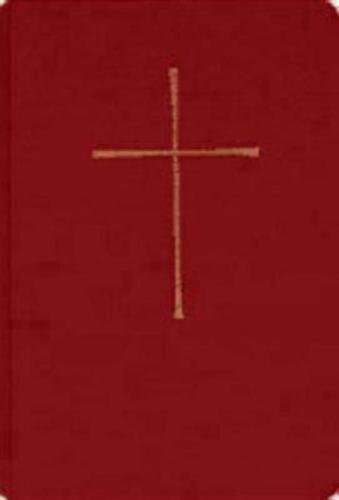
Book of Common Prayer Chapel Edition: Red Hardcover
By Church Publishing
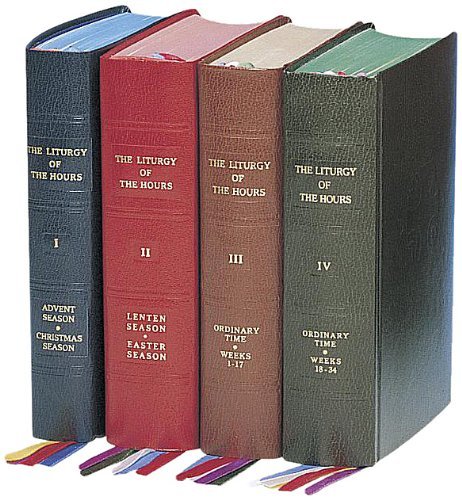
Liturgy of the Hours (4-Volume Set)
By Catholic Book Publishing Co
Tune in next week for another episode!do you enjoy speaking with joy? consider supporting me on patreon!
October 8, 2019
Freedom and Restraint
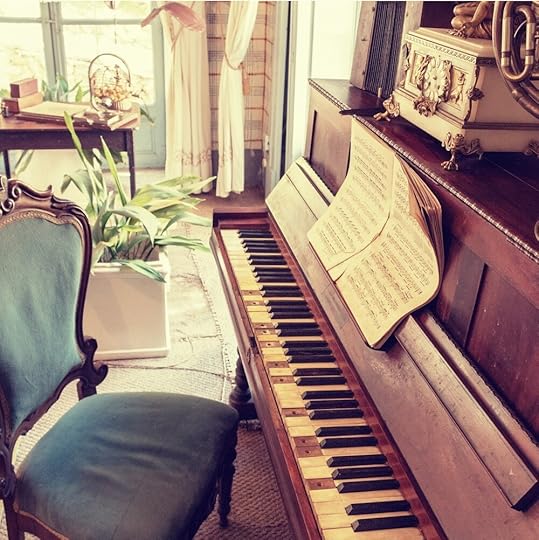
True freedom necessitates restraint.This week’s episode explores Bach fugues, improvisational jazz, poetry, and a kid's cartoon to suggest the idea that true freedom necessitates restraint.
Students talked loudly about wanting to be free to dance, to make love, to be themselves. So do I. So we left literature and talked about the body, and I kept asking questions: what is it in you which gives you this freedom? Finally one of the young men, with great reluctance, pulled out the word: skeleton. It is our bones, our structure, which frees us tot dance, to make love. Without our structure we would be an imprisoned, amorphous, blob of flesh, incapable of response. The amoeba has a minimum of structure, but I doubt it it has much fun.
— Madeline L'Engle, Circle of Quiet
I am a mediocre pianist.
There’s no being nice about it, that’s the truth. I can play most pop songs by ear, and I can tumble my way through sheet music, but true mastery is not my own. Perhaps you would think this would make me a free pianist, unfettered as I am by the strictures of classical training. My fingers are not trained to the relentless matchings of scales and repetition (at least they haven’t been for a very long time), I do not hold my hands the right way. Am I freer than the classical pianist? Certainly not. The classical pianist is free to be excellent, to play a fugue with merciless precision, and to play the tired old chords of every third pop song you hear on the radio. She, the classical pianist, is more free than me. She knows the rules, and so she can break them. I am free only to be average, to plunk, to sound out an easy tune.
I think this is analogous to our situation in the modern world. We do not like to be given restraints of any kind or told that we must behave or live in a certain way. Ostensibly, this is because it curtails our freedom, makes us unable to do and live in any way we please. It makes us less free. But is this true?
what is freedom?We think of freedom as lack of restraint. But lack of restraint leads to bondage. Think of Romans 6: “You have been set free from sin and have become slaves to righteousness… When you were slaves to sin, you were free from the control of righteousness. What benefit did you reap at that time from the things you are now ashamed of? Those things result in death! But now that you have been set free from sin and have become slaves of God, the benefit you reap leads to holiness, and the result is eternal life.” What Paul is arguing here is that freedom to sin is not freedom at all. A few centuries later, Saint Augustine would formulate his own version of this, arguing that true freedom is the ability to choose the good.
If we are only free to choose sin, we are like the mediocre pianist. We are really only free to choose the worst option. This means that to learn to be free, and truly free at that, we must learn to accept the reigns of restraint.
Today we’ll explore how restraint makes us free, and think about what this might mean for our moral, practical, and skllful lives. Musical — Counterpoint in Bach’s Fugues, with Joel ClarksonEven the most infamous modern composers had to know the rules before they could break them. Their so called “freedom” from form, ultimately became a rigidly choreographed divergence from 2. Literary — “Bach Invention” by Jane Tyson Clement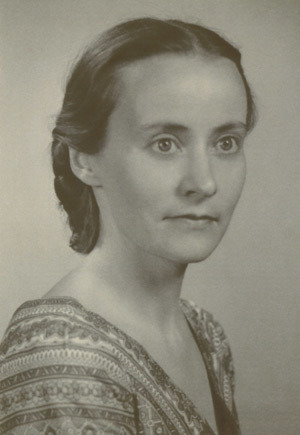
Bach Invention
Jane Tyson Clement
If I could live as finished as this phrase,
no note too strong; each cadence purposed, clear,
the logic of the changing harmony
building and breaking to a major chord
strangely at home within a minor web
of music; if I could define my end,
from the beginning measures trace my course,
I might be old and prudent, shown by laws
how to devise a pattern for my days
and still be free, unhampered, yet refined.
He sat before the keys and turned the notes
into a fabric of design and peace;
here are the notes, the keys, my fingers free
to run them through their course, and here my mind
seeing his wisdom work within the chords,
finding his knowledge in the finished line.
I would be wise if such restraint were mine.
1939
Smith College, Massachusetts
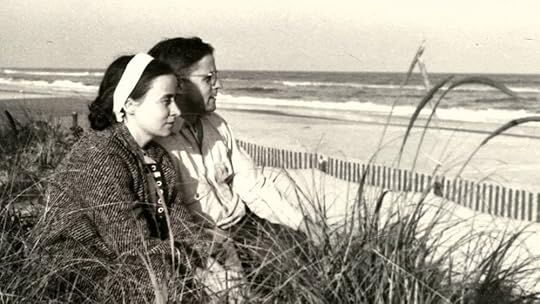
I might be old and prudent, shown by laws
how to devise a pattern for my days
and still be free, unhampered, yet refined.
— Jane Tyson Clement
In this beautiful little poem, Jane expresses her desire to a life as beautiful as a Bach Invention.
What I love best about Jane Tyson Clement’s poetry, is her fervent desire to live a wise life, and to figure out how to do that in a world where all the options seem like bad options, or at least like complex options. In this poem, she expresses her desire to have a life as ordered and prudent as a Bach Invention. She uses many words which indicate restraint and discipline: purposed, logic, define, trace, prudent, law, pattern. And yet, ultimately, this structure is what gives a Bach invention such pleasure in its freedom, which she reflects with words and images like breaking, free, unhampered. The structure of the invention is not a march, but a dance.
It reminds me of a beautiful passage of scripture, Galatians 5:
You, my brothers and sisters, were called to be free. But do not use your freedom to indulge the flesh[a]; rather, serve one another humbly in love. 14 For the entire law is fulfilled in keeping this one command: “Love your neighbor as yourself.”[b] 15 If you bite and devour each other, watch out or you will be destroyed by each other.
16 So I say, walk by the Spirit, and you will not gratify the desires of the flesh. 17 For the flesh desires what is contrary to the Spirit, and the Spirit what is contrary to the flesh. They are in conflict with each other, so that you are not to do whatever[c] you want. 18 But if you are led by the Spirit, you are not under the law.
19 The acts of the flesh are obvious: sexual immorality, impurity and debauchery; 20 idolatry and witchcraft; hatred, discord, jealousy, fits of rage, selfish ambition, dissensions, factions 21 and envy; drunkenness, orgies, and the like. I warn you, as I did before, that those who live like this will not inherit the kingdom of God.
22 But the fruit of the Spirit is love, joy, peace, forbearance, kindness, goodness, faithfulness, 23 gentleness and self-control. Against such things there is no law. 24 Those who belong to Christ Jesus have crucified the flesh with its passions and desires. 25 Since we live by the Spirit, let us keep in step with the Spirit. 26 Let us not become conceited, provoking and envying each other.
The christian life is learning to keep step with the spirit.Another way to think of this is as a dance.I love this image presented to us. It makes me think of Ceilidh dances in Scotland. These traditional dances are anything but restrained, and yet without restraint, without learning the rules, and without keeping step with your fellow dancers, your toes would be in terrible danger! I can speak from experience when I say that learning the rules of Scottish dancing gives one such a sense of pleasure and freedom, to be able to whirl and swirl without (too much!) fear of toenail annihilation.
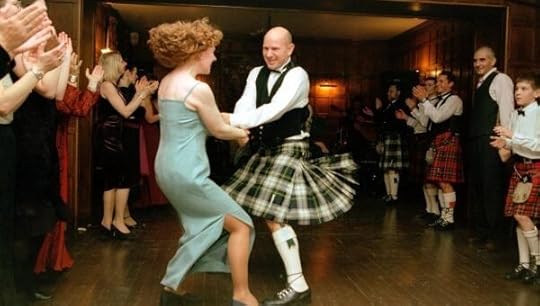
good dancers do not step on each other’s toes because they know the dance.
by the way, we discussed JTC’s poetry on last week’s episode, in case you missed it.

The Avatar must learn to master all the elements.
In the imagined world of this show, there are four nations based on the four classical elements: fire, water, earth, and air. In each nation, some of the people can “bend” one of these elements (or control it). The Avatar is a special person who has power over all four elements, and acts as a mediator and peace keeper between the warring nations. When Aang (the new Avatar) comes to power, he must learn to master the four elements very quickly, to prevent the Fire Nation from taking over.
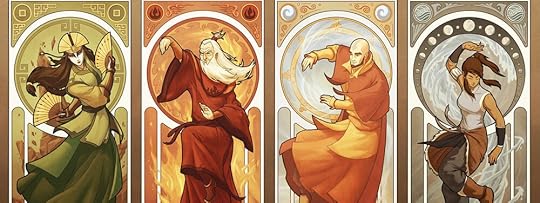
image from: https://www.alltimelines.com/avatar-last-airbender/
note: this series deals with eastern concepts like reincarnation and meditation, so for older kids with developed skills of discernment. It definitely opens up interesting conversations about world views! Overall, I think the series develops these ideas as a part of its story telling tool, it’s mythic logic, so while I may disagree with some of its philosophical conclusions, it’s beautifully and thoughtfully made.don’t discount the little things
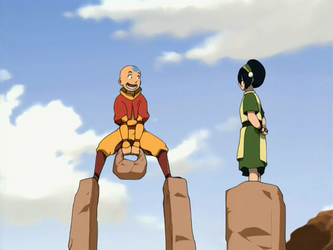
Aang has to allow himself to look silly, to do the same, unimpressive techniques over and over again. If we want to learn the restraint that leads to freedom, we must not be too proud for small and repeated training.
2. Everybody needs a master
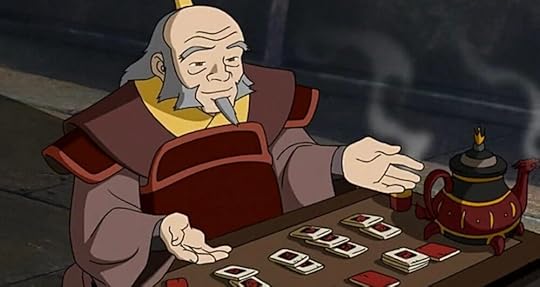
One of the key themes throughout the series is that everyone needs a master. You cannot learn to fire-bend without a fire-master. One of my favourite examples of this is the tea loving, humorous, and yet completely terrifying Uncle Iroh. This has been surprisingly true for me in my Phd, and I have been very thankful for my academia-bending master. I think this has many parallels to the Christian idea of discipleship— we learn through relationship and community. We cannot become virtuous on our own.
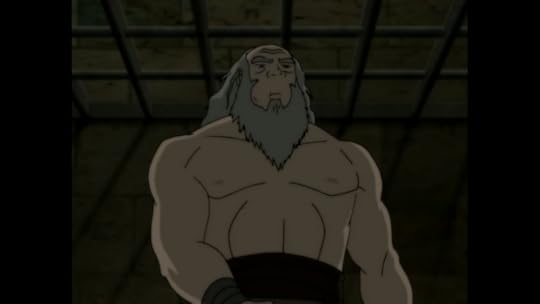
SUPRISE: Uncle Iroh is actually super jacked.
3. keep in step with the spirit
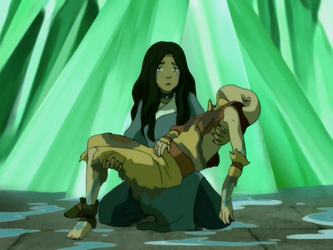
Though Aang must learn to master all of the elements, his true victory can only come through a triumph of character, a right orientation of his loves and loyalties. We learn restraint, we follow the step of the Spirit, so we can give ourselves in completeness for the people we love.
FYI: The Movie version is anathema. Don’t watch it.Tune in next week for another episode!Do you enjoy Speaking with Joy? Consider supporting me on Patreon!October 1, 2019
The Heart's Necessities (with Veery Huleatt)

I love this picture of Jane and her husband. Veery tells me it was taken a few years into their marriage at a NJ beach, where they truly found each other.
WINTER Jane Tyson ClementThe dark emerging trees from the new-winter wood are lovelier than leaves,as cold is also good. The heart’s necessities include the interludeof frost-constricted peace on which the sun can brood. The strong and caustic airthat strikes us to the bone blows till we see againthe weathered shape of home. No season of the soulstrips clear the face of Godsave cold and frozen wind upon the frozen sod. December 1955–June 23, 1956 Woodcrest

Jane Tyson Clement, 1917-2000
This episode explores the words of a poet from the past and a musician for the present to explore this timeless question of how to live well in a complicated world.
On this week’s podcast, I interview Veery Huleatt about the life and poetry of Jane Tyson Clement, whose life she recently honored in the beautiful book The Heart’s Necessities , which she edited. The book is a collection of Jane’s poems accompanied by a tenderly written account of Jane’s life, including her conversion to Christianity, the account of her pacifist convictions which developed during the height of World War Two, and the gentle, humorous, deep saga of her love story and marriage. The thing I found so beautiful about this book was how deeply Jane’s questions and hopes and passions mirrored my own, even separated as we are by 100 years. And the strength of her timeless words is reflected in the fact that Becca Stevens, a singer song writer, brought them to life so beautifully in her recent work, which is also discussed in the book.
I know you’ll enjoy this interview, and I hope you’ll check out both the book and Becca Steven’s beautiful music.
Happy Birthday, Jane!
In a happy accident of fate, today (October 1st) would have been Jane’s 102nd birthday. I’m thankful she lived and wrote so faithfully.
This is a musical version of the poem that provides the title for the book.Another beautiful song from the project combining Becca Steven’s music and Jane Tyson Clement’s poetry.You can buy the book through Plough Publishing’s website, or through the link below.
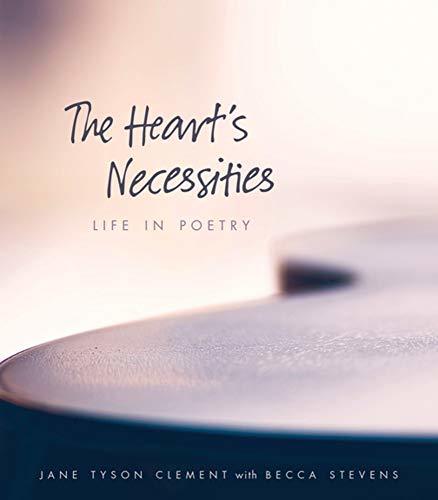
The Heart's Necessities: A Life in Poetry
By Jane Tyson Clement
To listen to more music from the project, click here.

Such a pleasure to get to meet Veery in real life at the Bruderhof in Walden New York. I think we look very autumnal here. :)
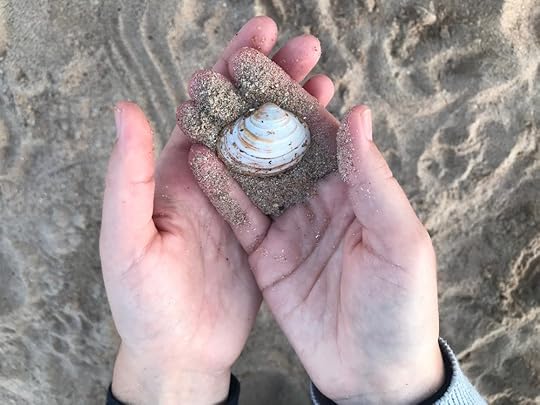
Have you gotten to listen to last week’s episode about Touch yet?
September 24, 2019
Touch
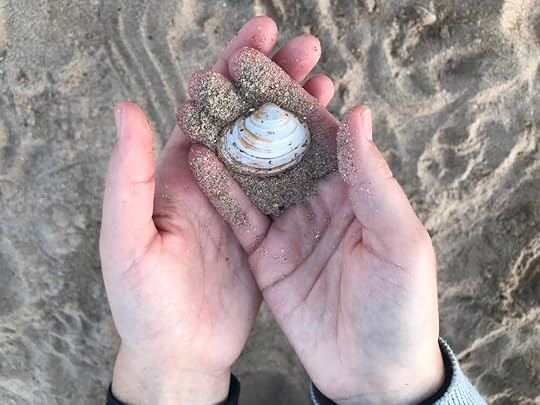
To be a human is to have a body, and to have a body is to touch and be touched.
The silky softness of a dog’s fur, the grainy roughness of sand, the bracing coolness of water. Touch is the triumph of a high five, the comfort a bear hug, the lurching nervous magic of a kiss. Touch is the shock of a slap to the face, the grief of a hand that slips out of our own, the betrayal of a smack that should be a carress. Touch is safety, danger, pleasure, pain, comfort, courage, human. We are touching creatures, feeling our way through the world. We reach for the world, for each other, for God.
To touch and be touched is to be human.In this week’s episode, we will examine how touch is central to the human experience. We’ll examine this idea through three works of art (one literary, one visual, and one musical), examining our deep desire to touch creation, each other, and God.
Listen at the link above, and follow along in the notes below. Literary — “God’s Grandeur” by Gerard Manley Hopkins
Oh, morning, at the brown brink eastward, springs—
Because the Holy Ghost over the bent
World broods with warm breast and with ah! bright wings
— Gerard Manley Hopkins, "God's Grandeur"
For Hopkins, creation, the natural world is God’s generous gift to us, the place we see His glory, and are drawn into worship.
I love the way he describes the world as “charged” with the grandeur of God. It makes me think of when I’ve walked around a carpeted house in socks and then touched something metal— the electric charge shocks my finger and I am reminded of a power and a connectedness I had not noticed before. Creation is “charged” with God’s presence. Sometimes we will suddenly see its glory, flaming out in a moment of excess, gathering to a greatness of splendour. The words and images he uses to describe are all visceral, sensual words— ooze, shock, flame, crush. All textures to be felt, touched, experienced.
Creation is made for touching.The silky softness of a dog’s fur, the grainy roughness of sand, the bracing coolness of water. We are creatures, and we belong in the home of our world, to delight in its textures and temperatures, to touch and be touched by it. The very first image we are given of man is as a gardener or, perhaps better put, as a husbandman. In the Genesis story after creating the world, God makes man, and sets him in the garden, and blesses them saying “Be fruitful and multiply and fill the earth and subdue it, and have dominion over the fish of the sea and over the birds of the heavens and over every living thing that moves on the earth” (Genesis 1:28). They are at home in the world, like the birds and the beasts that God has also blessed they to are to beget and to eat what God has give, but they are also responsible for the earth. Their identity is tied to their care of the earth. We often have the word “subdue” but it is perhaps better understood as to “husband” the land or to steward it.
My Bible commentary reads:
“Man Goes forth under this divine benediction— flourishing, filling the earth with his kind, exercising dominion over the other earthly creatures. Human culture, accordingly, is not anti-God…rather, it is the expression of man’s bearing the image of his Creator, and sharing as God’s servant, in God’s kingly rule. As God’s representative in the creaturely realm, he (man) is steward of God’s creatures. He is not to exploit, waste or despoil them, but to care for them and use them in the service of God and man” New American Standard Study Bible, ed. Kenneth Barker (Grand Rapids: Zondervan, 1995.
We are made to be in communion with nature, to perceive God’s generosity and glory in it, to treat it with care and respect. But this does not describe our relationship to nature. Where there is meant to be communion, there is disunion. Where there is meant to be gentle touch that nurtures and cultivates, there is burning and breaking, plunder.
Nor can foot feel being shod…
All is seared with trade; bleared, smeared with toil;
And wears man’s smudge and shares man’s smell
For Hopkins, our disunion with nature is reflected in our despoliation of the natural world, particularly in the violence of the industrial revolution.
I love the way he describes this when he writes “nor can foot feel being shod.” If we are meant to touch the glory of God in creation, to feel the shock of its lavishness, our sin acts like a glove or a shoe, so that we can no longer feel the shock. We are alienated from nature, it cannot touch us, and we do not care. And this blindness leads us to abuse the creation we were meant to husband. As a result, the earth is bleared, smeared, seared. Touch that was soft like oil and majestic like electricity becomes dirty and damaging, obscuring the loveliness of nature. How vividly we see this in the world we live today, with smoggy skylines and oily oceans.
The Holy Ghost over the bent world broods….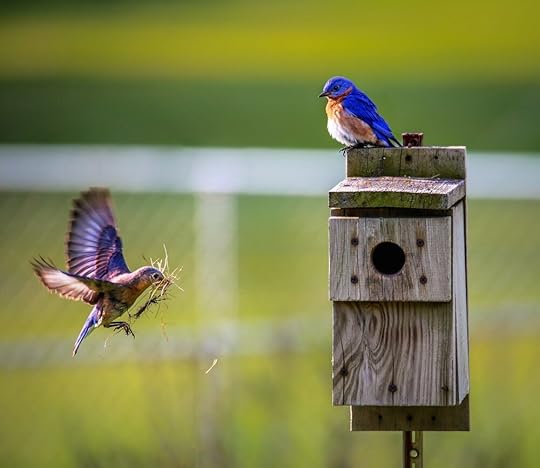
But God has not abandoned creation or us.
The image Hopkins gives us of God brooding over creation comes from Genesis 1:2 which reads “And the Spirit of God was hovering over the face of the waters” (ESV). This little word often translated as hovering, moving, is a funny word which is really more of a picture. Look at the definition of the word below.
was hovering
מְרַחֶ֖פֶת (mə·ra·ḥe·p̄eṯ)
Verb - Piel - Participle - feminine singular
Strong's Hebrew 7363: To brood, to be relaxed
The picture we are given in Hebrew is of God as a mother bird brooding over a nest of eggs, gently bringing them to life. And this is what Hopkins brings us back to. That God still shows this care. That God still broods over the world. That God still broods over us. There is hope, Hopkins finds, as he watches the sunrise that God may bring us back into union with nature, that we may once again feel the shock of God’s presence in it…
That we may take off our shoes and feel the holy ground of the garden.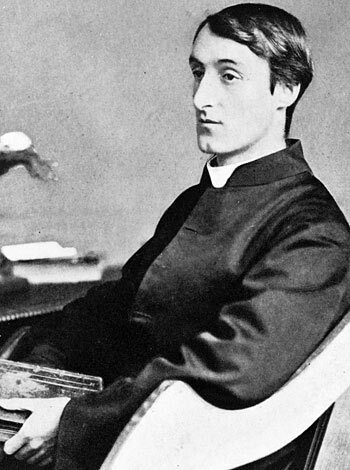
Gerard Manley Hopkins (1844-1899) was a Jesuit poet and priest. To learn more about him, check out the books in the bibliography at the end of this post.
You must check out my brother Joel’s Patreon. He posts original compositions, beautifully edited footage of Scotland, and dramatic readings (he’s an audiobook narrator). You won’t regret it.
2. Visual — “The Child’s Bath” (1893) by Mary Cassatt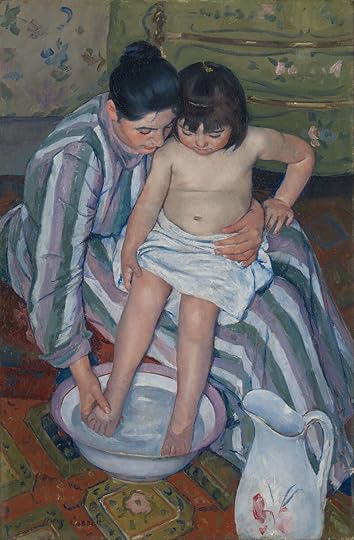
Yet you brought me safely from my mother’s womb and led me to trust you at my mother’s breast.
— Psalm 22:9
Mary Cassatt painting the profound and prosaic moments of domestic life, particularly of mothers and children. Her work demonstrates how safe, loving touch brings our souls and bodies to life.
Mary Cassatt was a great painter, one of the pioneers of impressionism. In contrast to the “important” scenes and subjects many masters chose, she focused her work on the epic theatre of homely scenes— of tea time and bath time and reading the paper. Her paintings dignify the importance of motherhood and of the comfort of home in a patriarchal world that often scoffed at these “women’s concerns.”
Safe, loving touch is the magic that brings the brains of little babies to life.As mama’s nurse and cuddle and swaddle, creating a rhythm of love, connection, and comfort, babies learn to see the world as a safe place, giving them the freedom to explore, learn, grow. In this article on Pyschology Today, Christopher Bergland writes that studies have found that “ loving touch, characterized by a slow caress or gentle stroking increases the brain's ability to construct a sense of body ownership and plays a big part in creating and sustaining a healthy sense of self.” On the contrary, when children do not have enough touch (for instance in an orphanage setting), not only does their cognitive development slow down, but they are more prone to infections and sickness.
Loving touch as children is key to our cognitive, emotional, and physiological development.I think that’s why this picture is so beautiful to me. It is a picture of the sweetness humans are made to touch and be touched, of the safety and comfort of being clean and taken care of. Look how firmly the mama holds the baby, look how comfortable, unworried, and unashamed the little girl looks. She is not only safe, she is clean, she is cared for, and she is loved. This feeling, stored deep in our skin, our nerves, our bones is what forms our sense of who we are, of what the world is like, of what we can do and not do.
This is why violent or inappropriate touch as a young child, or neglect of touch can have such a profound effect well into our adult years.To heal, one has to learn to feel deep in their bones that they are safe in the world. That touch can heal as well as hurt. A book which beautifully and scientifically shows this to be true is Bessel Van Der Kolk’s work The Body Keeps the Score (2014). Read what he says.
BEFRIENDING THE BODY
Trauma victims cannot recover until they become familiar with and befriend the sensations in their bodies. Being frightened means that you live in a body that is always on guard. Angry people live in angry bodies. The bodies of child-abuse victims are tense and defensive until they find a way to relax and feel safe. In order to change, people need to become aware of their sensations and the way that their bodies interact with the world around them. Physical self-awareness is the first step in releasing the tyranny of the past.
In my practice I begin the process by helping my patients to first notice and then describe the feelings in their bodies—not emotions such as anger or anxiety or fear but the physical sensations beneath the emotions: pressure, heat, muscular tension, tingling, caving in, feeling hollow, and so on. I also work on identifying the sensations associated with relaxation or pleasure. I help them become aware of their breath, their gestures and movements.
All too often, however, drugs such as Abilify, Zyprexa, and Seroquel, are prescribed instead of teaching people the skills to deal with such distressing physical reactions. Of course, medications only blunt sensations and do nothing to resolve them or transform them from toxic agents into allies.
The mind needs to be reeducated to feel physical sensations, and the body needs to be helped to tolerate and enjoy the comforts of touch. Individuals who lack emotional awareness are able, with practice, to connect their physical sensations to psychological events. Then they can slowly reconnect with themselves.
Bessel Van Der Kolk, The Body Keeps the Score
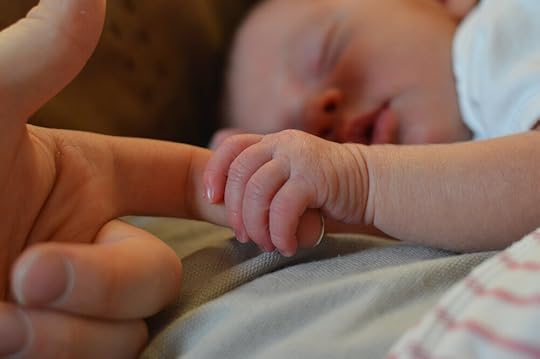
I opened this section with Psalm 22 where the Psalmist says God “led me to trust You at my mother’s breast.” Our bodies crave touch as desperately as food or water. It is at the heart of what it means to be human. And in this most physical manifestation of human neediness is a testament for another profound desire …
… to touch God.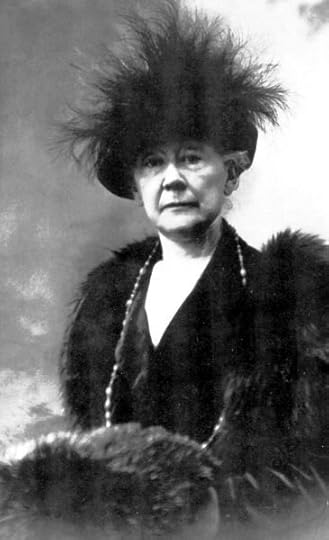
Mary Cassatt (1844-1926) was an American impressionist painter who spent most of her life in Paris. Most of her paintings are portraits taking place in domestic settings. She had a long and fractious friendship with Edgar Degas. To learn more about her, check out this short biography
3. Musical — Ave Verum Corpus by William Byrd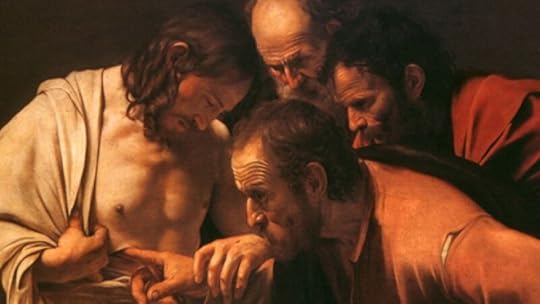
Then Jesus said to Thomas “Put your finger here, and look at my hands. Put your hand into the wound in my side...”
— John 20:27
There is an ache in the human soul that is so essential that almost every philosophy and system of religion tries to explain it. It is some times described as a lack, a wound, a failure to achieve some unknown goal. The old theologians say it is because we are made for union with God. Saint Augustine famously wrote, “We are restless until we find our rest in you.” But how can that ache for intimacy ever be satisfied? How can the gap between ourselves and the Beloved, which we so naturally cross with affection in our human relationships, ever be crossed when the divide seems to be infinite— the gap between our fleshbound world, and God’s infinite Spirit?
In Christ, and in communion, God invites us to touch and be touched by Him.In Love, God has made Himself available to us. He has bridged the divide.English:
Hail, true Body, born
of the Virgin Mary,
having truly suffered, sacrificed
on the cross for mankind,
from whose pierced side
water and blood flowed:
Be for us a foretaste [of the Heavenly banquet]
in the trial of death!
O sweet Jesus, O holy Jesus,
O Jesus, son of Mary,
have mercy on me. Amen.
Latin:
Ave verum corpus, natum
de Maria Virgine,[2]
vere passum, immolatum
in cruce pro homine
cuius latus perforatum
fluxit aqua et sanguine:[3]
esto nobis praegustatum
in mortis examine.[4]
O Iesu dulcis, O Iesu pie,
O Iesu, fili Mariae.
Miserere mei. Amen.[5]
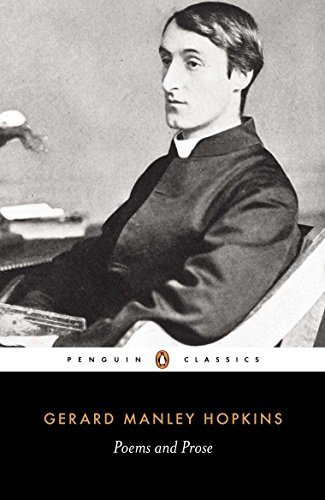
Poems and Prose (Penguin Classics)
By Gerard Manley Hopkins
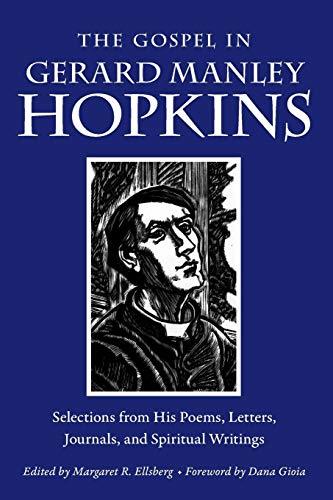
The Gospel in Gerard Manley Hopkins: Selections from His Poems, Letters, Journals, and Spiritual Writings (The Gospel in Great Writers)
By Gerard Manley Hopkins
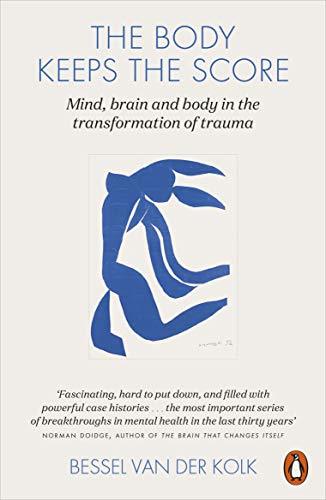
The Body Keeps the Score: Mind, Brain and Body in the Transformation of Trauma
By Bessel Van Der Kolk
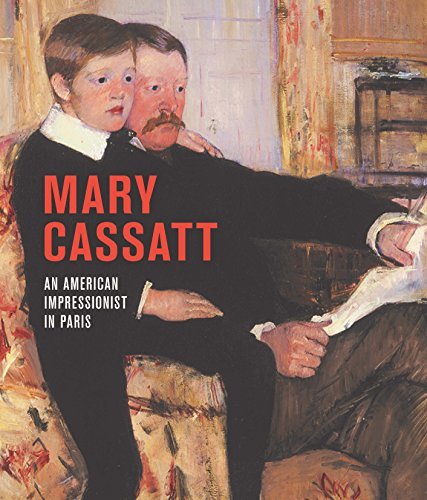
Mary Cassatt: An American Impressionist in Paris
By Flavie Durand-Ruel Mouraux
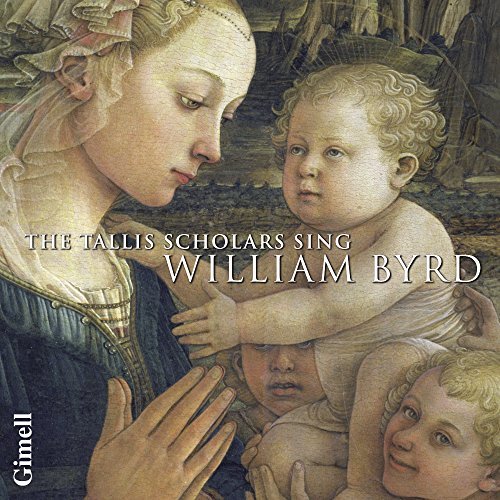
The Tallis Scholars Sing William Byrd
Gimell
Do you want to support Speaking with Joy?
Check out my Patreon. You can support me for $2 or $10 a month, and as a thank you I send out monthly newsletters, secret podcasts, playlists and more. It helps me stay afloat while I do this Phd, and has become a wonderful source of support and connection with podcast friends. I’d be delighted if you’d check it out!
September 17, 2019
NEW PODCAST and GIVEAWAY — Speaking with Joy Live
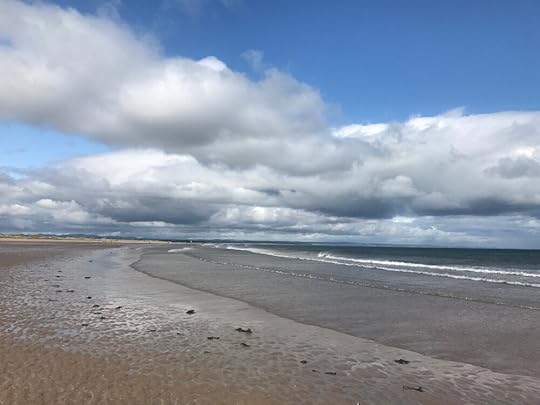
All the glory that the Lord has made and the complications we could do without...
— Sufjan Stevens, "Casimir Pulaski Day"
Speaking with Joy is back!
After a summer book club and a September hiatus, I am thrilled to announce that Speaking with Joy is back in business, recording podcasts, and thinking about beautiful things (I’m always doing this, actually, but you know what I mean). To launch this season, I’m sharing some of the recordings from my Speaking with Joy Live events this summer. This audio is from our Colorado show, and I’m joined by my excellent brother Joel. Unfortunately, my singing vocal track didn’t come through, so I’ve included studio tracks of our music where the live versions would have been.
The evening centred around the question of why beauty matters in a broken world. I hope it fills your soul!I know being with all of you inspired mine. Get ready for a new season of Speaking with Joy!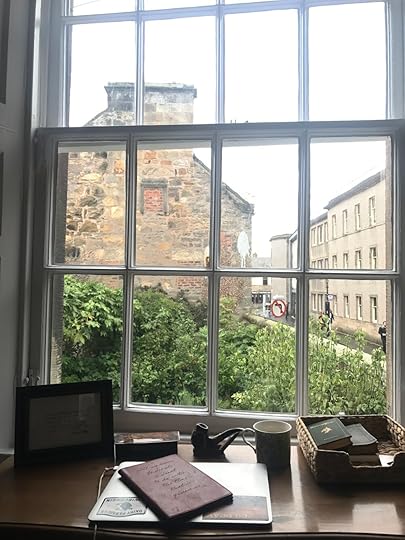
As we get ready to begin a new season, I thought I might take a moment to remind you all of the best ways to keep up with Speaking with Joy.
Subscribe:
The best way to make sure you never miss a podcast or a blog post is to subscribe to my email list here on Squarespace (below), and then to subscribe to my podcast on iTunes (or wherever you listen). I send out emails every time I post a podcast/blog, but don’t worry, I’ll try not to pepper you with too many emails. I hate that too. :)
Oh, and yes: I’m working on putting it up on Spotify!
Subscribe!
Never miss a podcast or a pondering!
Email Address
Sign Up
Thank you!
2. Patreon:
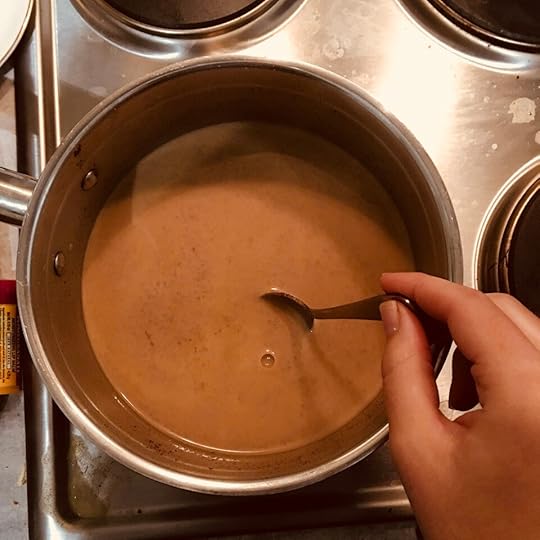
Chai Latte… oh so delicious!
Patreon is a way of supporting me and getting more out of the podcast. Each month I post a newsletter, booklist, playlists, secret podcasts, and whatever else strikes my fancy! (For instance: a lovely chai latte recipe sent to me by Katie Clinge!). It’s also a place for you to discuss the podcast, books, life etc. with other patrons on a more private forum. I feel I can be more personal and less polished in this space, and have been delighted and surprised by what a fun and soul filling space it has become for me. You can become a supporter for $2 or $10 a month, and there’s more info about that on the page itself.
Check out my Patreon
3. A Scottish Giveaway!

I thought it would be fun to celebrate a new season by hosting a Scottish Giveaway!I will send a package full of literary and tasty Scottish treats to whoever wins this little give away.To enter:make sure you’re following me on Instagram, Twitter, or Facebook (whichever applies to you!)Tag a friend in the comments on the post that will be titled NEW PODCAST AND GIVEAWAY (I’ll put one on each social)if you don’t have social media, just send the podcast to a friend and then send me an email at thejoynessthebrave@gmail.comI’ll announce the winner on next week’s episode!
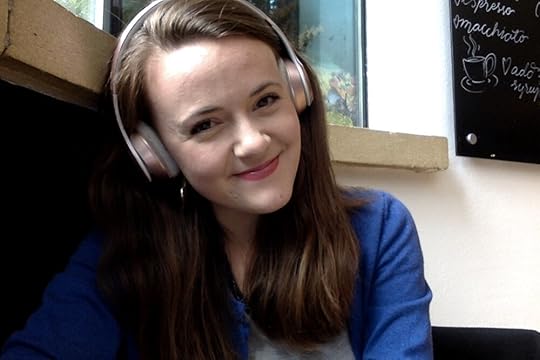
Well, friends,from my Scottish coffee shop to your corner of the world: much love! And I can’t wait to begin a new season with you all.Peace,Joy
August 15, 2019
Two Benedictions
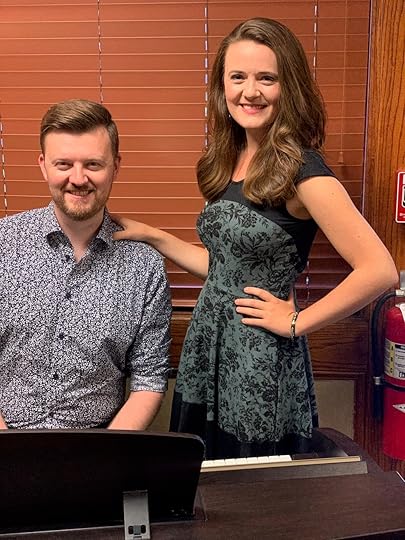
In the end the Shadow was only a small and passing thing: there was light and high beauty for ever beyond its reach.
— J.R.R. Tolkien, The Return of the King
Joel and I just finished our mini Two Benedictions tour, and what a wonder two weeks it has been. We loved singing, sharing, and hoping with you all. It was such a delight for me to get to connect familiar names with unfamiliar faces. Thank you for listening, laughing, crying. We were honoured by your laughter and tears together. We hope your soul drank deep of hope and that you left strengthened in the battle for beauty. If you want to connect, listen, or support, here are some ways you can do that.Keep up with us on social media!
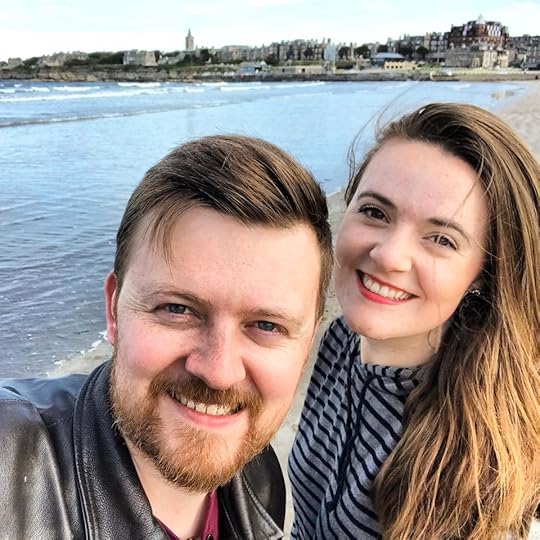
When we’re not making music or writing our Phds, we like to keep up with people on the internet. Joel loves instagram best, I love Twitter best. Keep up with us!
Joy Clarkson Facebook
Joy Clarkson Instagram
Joy Clarkson Twitter
Joel Clarkson Facebook
Joel Clarkson Instagram
Joel Clarkson Twitter
2. Listen to our music
Joel and I have recorded two albums together, and we would be delighted if you wanted to download, stream, or buy our music. I’m attaching links to Amazon Music below (because it’s the easiest to link through my website host), but you can also find us on iTunes, Spotify, or anywhere that sells music. However, the best place to purchase our music is on Joel’s Website. You can also find lots of Joel’s other wonderful music there, so check it out!
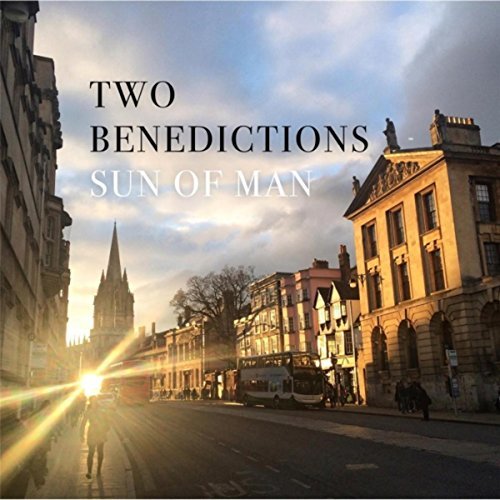
Sun of Man
Two Benedictions
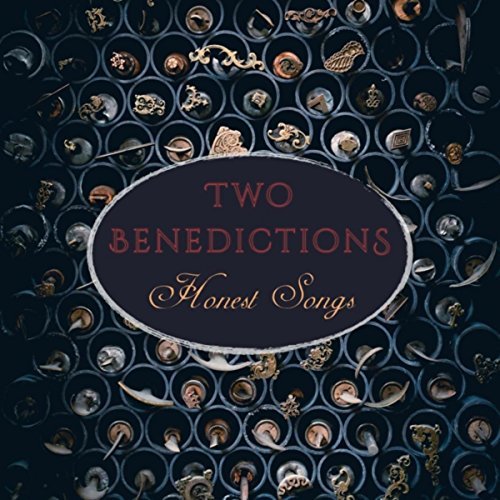
Honest Songs
Two Benedictions
BUY LOCAL: Get our album from Joel’s website at the link below
Two Benedictions Music
3. Support Joel on Patreon
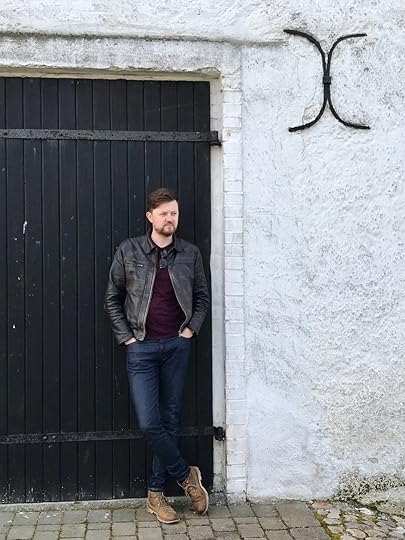
Patreon is a way for you to support us through our Phd’s while, as a thank you, we invite you into our journies through Scotland and provide fun extras along the way.Here’s what Joel says about his:
To make this possible, I need your help. Tuition costs for an American student studying abroad at a prestigious university like St Andrews are substantial. By supporting me here on Patreon, you are giving me the assistance I need to press forward in this exciting study, and to allow me to keep composing new music along the way. You are the link that helps me tie together this invaluable research, and the world of my own artistic expression which has drawn me to further understand the theology behind it.
Will you join me on this exciting journey and enter into my story?
As a thank you for your monthly support, I’ll provide new downloadable musical tracks on a monthly basis, as well as exclusive creative content, including music videos, nature photography of Scotland, and inspiring essays on life, theology, and art.
Check out Joel’s Patreon at the link below:
Joel Clarkson's Patreon
4. Support Me on Patreon
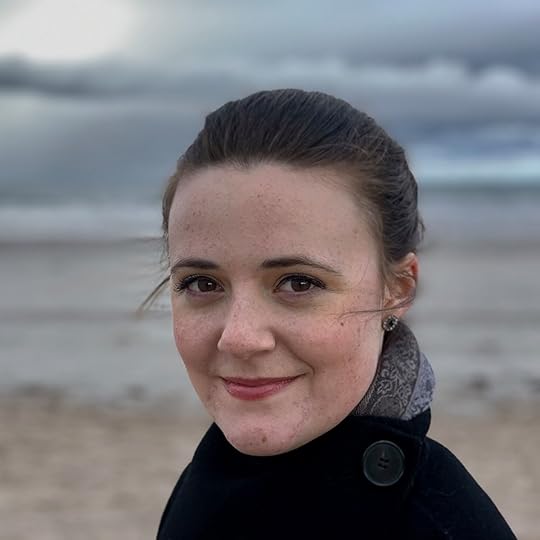
This week I’m celebrating my one year Patreon Anniversary!
Last year I was overwhelmed trying to support myself financially, finish my Phd, and produce my podcast. It felt like i had three full time jobs. So, I prayed about it, and then reached out to my listeners asking them to support me a little bit each month ($2 or $10) so I could continue producing the podcast and completing my Phd. You all went above and beyond my expectations, and I have so enjoyed getting to connect more deeply with a smaller community of people. Each month I put up secret podcasts, books lists, my monthly newsletter (The Joynal). I’m really thankful for the solid crew of supporters I already have, and as I enter into my final year of Phd, I’d be honored if you would join the crew.
You can check out my Patreon at the link below:Joy Clarkson's Patreon
What’s next for Speaking with Joy?
I’ll be taking a short break, but my new season will air September 9th. But keep your eyes peeled in the meantime, because at some point I will post the live recording of our Colorado Event. Till then— be well, know you’re loved, and talk to you all soon!
August 12, 2019
God's Mirth — Finale
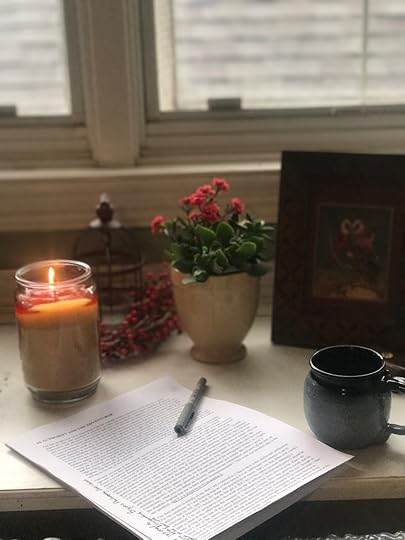
There was some one thing that was too great for God to show us when He walked upon our earth; and I have sometimes fancied that it was His mirth.
— G.K. Chesterton, Orthodoxy
The Finale…
Friends, we made it! This week we mark the finale of our summer book club reading Orthodoxy by G.K. Chesterton. Over the past weeks I have been challenged, amused, and touched by Chesterton’s words and your own. Even though I lead the book club, make no mistake: I learned from each one of you as your learned with me. I loved reading all of your comments each week on Facebook and Instagram. You all brought new insights to me, and I’m so thankful that so many of you stuck with me throughout this entire process. I still can’t believe that I convinced several thousand people to read one of my favourite books with me. A book which, in Chesterton’s own words, is a “chaotic little volume.” You all are the best. I’ve had a blast and I hope you have too. The internet is pretty fun sometimes. :-)
A few other little announcements…Season Three of Speaking with Joy is coming soon…
I’m already in the thick of recording the new season. I’m really excited about this upcoming season. It’s shaping up to be a wonderful mix of my favourite pieces of art mixed with themes that seem pressing and important to me. There will be two kinds of episodes. The first will be the “original” format: a theme explored through the lens of three works of art (visual, literary, and musical). The second kind of episode will be an interview with someone on a topic they’re an expert on. As an example, check out Rebekah Lamb’s episode on Boredom.I can’t wait to share these episodes with you!
Sometime in between now and then, I’ll also post the recording of my live event in Colorado.Which reminds me!
Come be my friend in Colorado at my live event!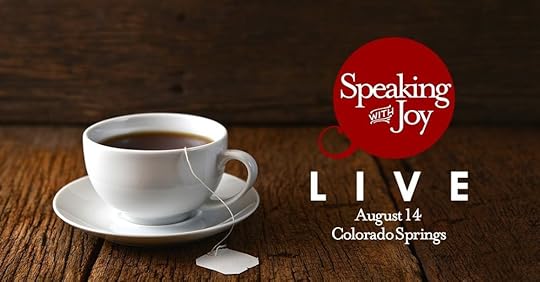
An evening of goodness, beauty, and live music…
This Wednesday, Joel (my brother) and I will be performing at a live event exploring the question of why beauty matters in a broken world. It will involve short talks interwoven with music Joel and i have written together. We just did one of these in North Carolina and it was such an encouragement to us. I hope to see many of you there!
You can buy your tickets here.For an example of Joel and me singing together, check out the video below….One last thing…
Happy Patreon Anniversary!One year ago this week I started a Patreon as a way to survive my Phd and to keep a closer relationship with my listeners. You all went above and beyond my expectations. You are an answer to prayer. Thanks for sticking with me.
All for now friends!
So much love!
Joy
August 6, 2019
Bless, Broken, Given — Featuring Glenn Packiam

Blessed, Broken, Given ... Your story becomes sacred in the hands of Jesus
Today I had the great pleasure of interviewing Glenn Packiam about his new book Blessed, Broken, Given. Glenn is a pastor of New Life Church in Colorado Springs, Anglican priest, and long time family friend. Glenn has a Phd from Durham University and I always look forward to cozy theological chats when our families get together. In this podcast we talk about how the three words (blessed, broken, given) used in Luke every time Jesus breaks bread come to symbolise his gift of Himself to us, and to give our lives form and meaning as Christians. I loved having this conversation, and I hope it blesses everyone who listens to it.
Glenn’s book launches today! So make sure to go get your copy…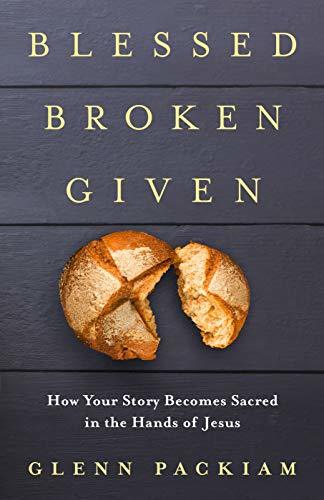
Blessed Broken Given: How Your Story Becomes Sacred in the Hands of Jesus
By Glenn Packiam
Joy Marie Clarkson's Blog
- Joy Marie Clarkson's profile
- 227 followers



